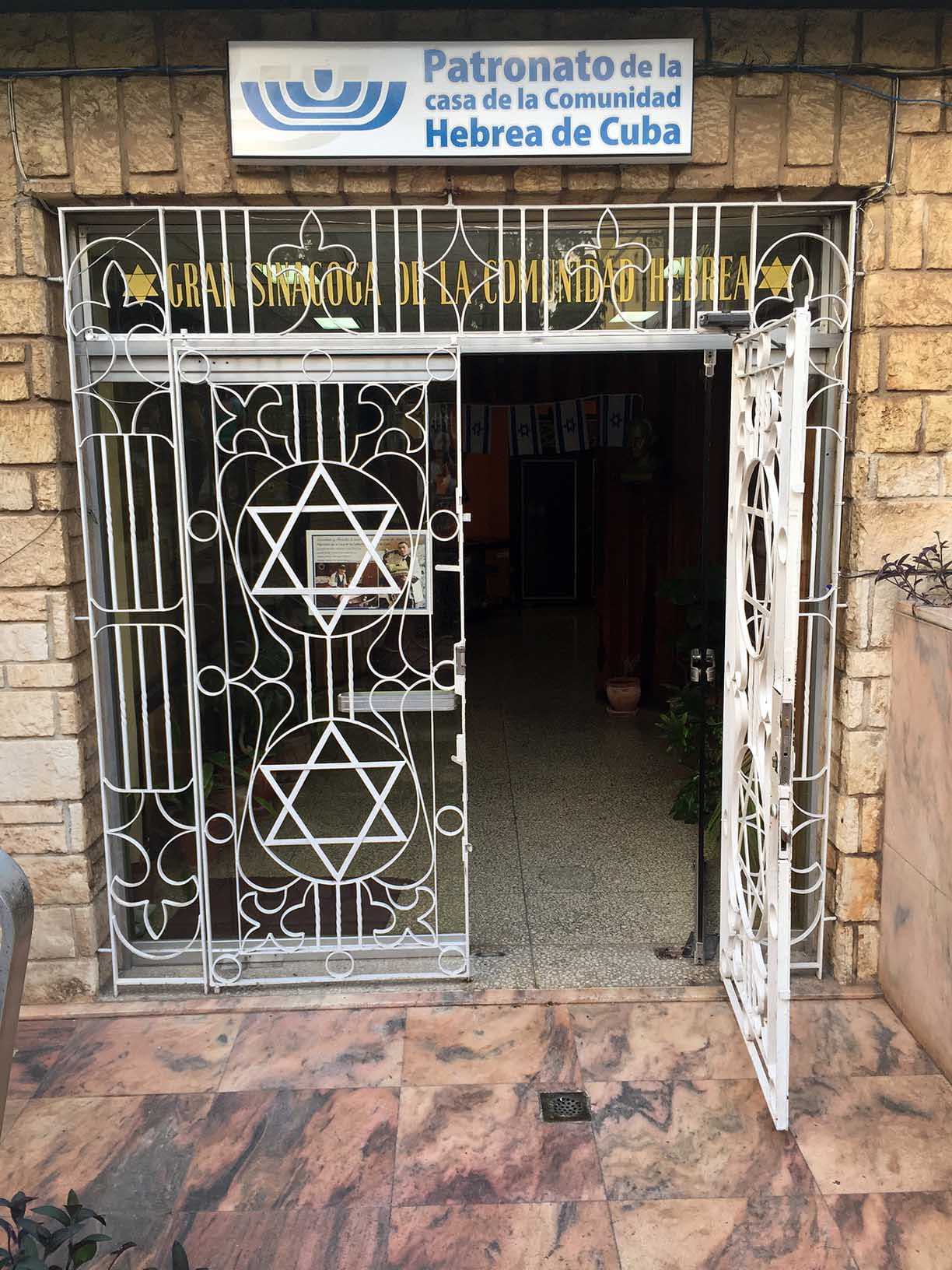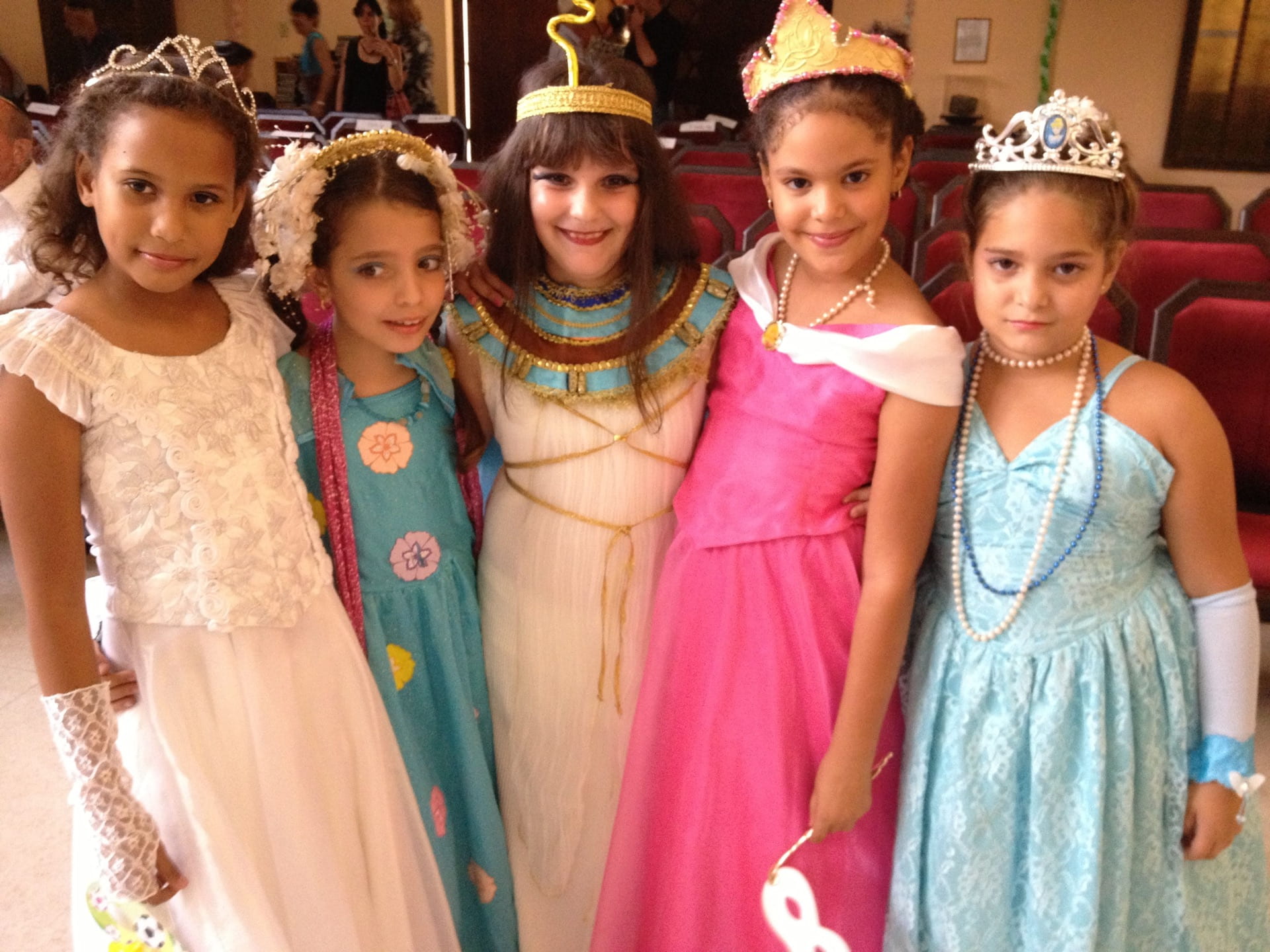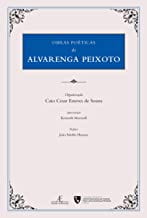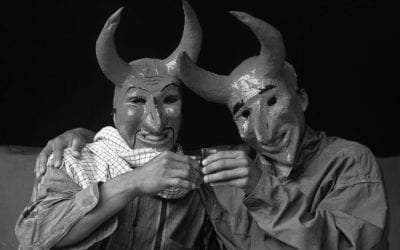My Ancestors’ Keys
In Search of the Jews of Cuba
When I was a child in Havana, we lived half a block away from the Patronato, also known as Temple Beth Shalom, the Jewish community center built on the eve of the Cuban revolution of 1959. I was too young when we left Cuba to remember it, but heard from my family what a majestic building it had been, that included a synagogue, library, dining room and social hall. The Jews of Cuba prospered after fleeing Europe on the eve of World War II, and the Patronato, designed by the famed Cuban architect Aquiles Capablanca, was a symbol of their prosperity, security and hope of remaining in Cuba for generations to come.
The community, reaching 15,000 when the Patronato was built, had grown to such a significant size because of the harsh quotas enforced by the United States in 1921 and 1924 that limited the entrance of immigrants from Eastern and Southern Europe, where most Jews lived at the time. Unable to enter the America to the north, Jews settled in Cuba, the nearby América to the south. They expected they’d soon apply for Cuban visas and go to the United States, but felt so at home on the island they stayed. Then the revolution changed their plans and they fled to the America that had once rejected them. But their gratitude to Cuba was everlasting; long after they became American citizens, they remembered they had survived as Jews only because Cuba gave them refuge. They held on to the figurative and literal keys to their lost home on the island, though as the decades passed they knew they were never going back.
Prayer
This happens to me often, too often: I am on my way home, driving down familiar streets, only a few blocks to go, and out of nowhere a merciless hand comes and grips my heart and wrings it dry. I tremble. Fog clouds my eyes. I am no longer sure if I am awake or dreaming. If I die, who will find me? All I can do is pray: Let me return home, I am almost there, please….
I don’t know why this happens. What I know is that, so far, my prayers have been answered. Hardly breathing, I reach my house. And when I open the door, I hear many keys clanging, the keys my ancestors stubbornly took with them to their exile.
—from Ruth Behar, Everything I Kept/Todo lo que guardé, (Chicago: Swan Isle Press, 2018)
The Patronato was part of my everyday visual landscape as my family and I passed by it on our strolls through the neighborhood. On my return trips to Cuba, I now stay in a rental apartment owned by neighbors who still live in our former building. Again, just as when I was a child, I am close to the Patronato, which has become a pilgrimage site for travelers searching for the traces of the Jews of the island. It is a refuge for me. I spend a lot of time there talking and reminiscing with Adela Dworin, who is the president of the community and the heart of Jewish Cuba today. She maintains her humble office in the library, guarding over the precious treasure trove of Jewish books. These include worn and tattered history and poetry volumes from the pre-revoutionary years, many in Yiddish, as well as novels and memoirs by Jewish writers donated by American visitors. My books are there too, though they have a habit of disappearing, which Adela jokes is a good thing.
Jews settled in Cuba beginning in the early 20th century, forming three distinct communities: U.S. Jewish expatriates, who spoke English; Sephardic Jews from Turkey, who spoke Ladino or Judeo-Espanyol; and Ashkenazi Jews from Poland and Russia, who spoke Yiddish, and were the majority, such that the name for a Jew in Cuba, still to this day, is “polaco” or “polaca” (Polish person). They built five synagogues in Havana (including the Patronato) and three synagogues in the provinces, buried their dead in Jewish cemeteries all over the island, founded Jewish schools, Yiddish theater, Sephardic radio stations, and Jewish bakeries, and created Jewish social clubs among the palm trees, both in small towns and in Havana.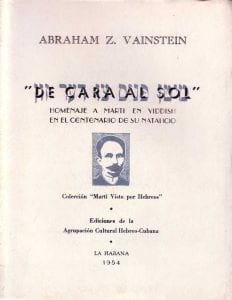
At the same time, the Jews came to feel Cuban. They absorbed the culture, the music, the language, the spirit of the island, and venerated José Martí and danced at the Tropicana Club. But they were determined not to lose or dilute their culture. They married within their own Jewish ethnic circles, ostracizing those who married outside the tribe or crossed the color line. My maternal grandparents were Ashkenazi immigrants from Russia and Poland and my paternal grandparents were Sephardic immigrants from Turkey. When my mother and father wed in 1956, even their union was so unusual—each side doubting the Jewishness of the other side— that it was seen as an “intermarriage.”
The Jewish community mostly supported Fidel Castro, but after the revolution turned communist, the majority of the island’s 15,000 Jews left in the 1960s for the United States. Their economic livelihood was threatened when private businesses were expropriated (most were merchants or peddlers) and they feared their Jewish identity would be at risk when religious schools were shut down and atheism imposed on the nation. Only around 1,500 Jews stayed, some because they believed in the revolution, some because they didn’t want to leave Cuba.
At four and a half, I was part of the exodus of the Jews who fled Cuba. Looking at my family’s old black-and-white photographs as I grew up in New York in the 1960s and 1970s, I wondered what had become of our lost Jewish home in Cuba. What traces were left of the Jewish presence—the cemeteries, synagogues, and Torahs? Who was taking care of this legacy? What Jewish memories had survived the years of revolutionary atheism? What had become of the handful of Jews who stayed on the island? Who might I have been had my family chosen to stay rather than leave?
In the early 1990s I began to travel back and forth to Cuba, searching for the Jewish community. I was determined to create a normal relationship with my native land and sought to build cultural bridges between Cubans and Cuban-Americans. This led to my anthology, Bridges to Cuba, and friendships with writers and artists, including a close bond with the Cuban book artist Rolando Estévez who inspired me to write poetry in Spanish and English.
I wanted to not be afraid to be Jewish in a Spanish-speaking country, something I’d found difficult in Spain and Mexico, where I became a hidden Jew while doing fieldwork, buckling under the pressure to conform to Catholic norms and sensibilities. Cuba, in contrast, was a safe place to be Jewish. The mix of Spanish, African, Chinese and other cultures, the stew or “ajiaco,” as the Cuban anthropologist Fernando Ortiz called it, created a sense of openness toward diversity. In turn, a history of activism against racist anti-Semitism, that Ortiz himself spearheaded during the1930s, had laid the foundation for a uniquely tolerant society in comparison to most of Latin America. Relative to its size, and despite having turned back the German Jewish refugees on the St. Louis in 1939, Cuba had opened its doors to many more Jews fleeing Europe than had the United States.
The loss of 90% of the Jewish population following the revolution made it difficult to maintain Jewish life on the island. But Judaism never disappeared. Throughout the 1960s, 1970s and 1980s, the peak years of the revolution, a few synagogues still functioned with the participation of Jewish elders who developed what became known as “the Cuban minyan.” In normal circumstances, a minyan is a quorum of ten Jewish adults—ten men, in the Orthodox tradition—the minimum number needed to carry out a complete Jewish religious service. But in Cuba, for a long time, the minyan consisted of the Jews who were present, plus however many Torahs (sacred scrolls) it took to fill the quorum, with God always counting as the essential tenth.
Just enough Jewish memory remained for this fading community to become the seed for the revitalization that soon took place as a religious awakening swept through Cuba after the fall of the Soviet Union. With Cuba’s economy on the brink of collapse, the government declared that the country had entered “a special period” of austerity, turning to tourism and opening the door to remittances from Cubans living abroad for much-needed hard currency. In 1991, members of the Communist Party were allowed to have religious affiliations, and the Cuban constitution, it was decided in 1992, would no longer be “atheist” but “secular.”
Out of fear of being labeled reactionary, Cubans had destroyed images of Catholic saints, bibles and sacred objects of Regla de Ocha (or Santería as this Afro-Cuban religion is popularly known) while Jews took down mezuzahs, traditional talismans, from their doors. Then, suddenly, Cubans were at liberty to pray, speak of God, assemble openly in churches, temples and synagogues. People took to the streets wearing crucifixes, Jewish stars, and dressed in white from head to toe after initiation into Regla de Ocha. Seeking spiritual solace at a time when revolutionary ideals were unraveling, Cubans began to practice a range of religions—Catholicism, Protestantism, Pentecostal faiths, Buddhism, Hinduism, Islam, Masonic ritual, Judaism, and Regla de Ocha and Palo Monte, religions of African origin that had survived the brutality of slavery.
After the Pope’s visit in 1998, religion became enmeshed in everyday life. Christmas trees could be found again in Cuba; Afro-Cuban religions experienced a revitalization; and the Jewish community was visited in 1998 by none other than Fidel Castro on the holiday of Hanukkah, who spoke at the Patronato of the links between the revolution of the Jews and the revolution of the Cubans. The Pope’s visit was a key symbol, too, of something larger: how much the revolutionary discourse had changed. Religion and spirituality offered new possibilities for self-expression to Cubans through a language of power that asked human beings to put their faith in the divine rather than in an earthly leader.
In response to Cuba’s willingness to allow God to return to the island, the U.S. government decided to offer a carrot to the communists by encouraging humanitarian and religious missions that brought not only Bibles and aspirin, but medical supplies, powdered milk, clothes, computers and other goods that helped Cuba cope with the economic crisis set in motion by the loss of Soviet subsidies. This religious opening occurred as other people-to-people humanitarian, medical, and cultural travel were also permitted, leading to American travelers going to the island to “discover” Cuban art, music and spirituality, creating networks of consumption for everything Cuban.
I arrived in Cuba in the early 1990s as the Jewish community was emerging from the ashes. The American Jewish Joint Distribution Committee in New York (JDC) was just beginning to become involved in supporting this Jewish revitalization in Cuba. The withering Jewish community would be transformed into a showcase for the “miracle” of Jewish survival in Castro’s Cuba. Once “el Joint” found its way to Cuba, other Jewish organizations followed. B’nai Brith, ORT, Hadassah, the Lubavitch of Canada and Argentina, the Jewish Conservative movement, all wanted a place at the table in Jewish Cuba. American synagogues adopted Jewish communities on the island as sister temples, while campus Hillel organizations promoted Cuba as the new hip place to go on social justice missions. Synagogues organized trips to help the Jews of Cuba to survive, through donations of food, medicine, clothes and books, as well as through Jewish education.
And indeed, the Jews of the island survived and thrived, learning Hebrew and Jewish history, restoring the flame of Judaism, while often feeling uncomfortable about being the recipients of charity. The community, though in need of financial support as Cuba’s economy continues to struggle to stay afloat, is highly educated. Jews work in health, education, law and business, but salaries are meager. Elders living on modest pensions abound, and young people dream of a future elsewhere, in Israel or the United States. Many who I met as active participants of the Jewish community in Cuba now live abroad and post selfies of themselves in their new locales on Facebook. As many as a thousand have left in the last thirty years. Yet a core group remains, and families with young children continue to learn of a long-lost Jewish heritage and integrate themselves into the ever-evolving community.
In turn, thousands of U.S. Jews have traveled to Cuba on religious missions. The Jews of Cuba came to occupy the role of a lost tribe that needed to be saved and returned to the fold of the world Jewish community. This avalanche of attention turned the Jews of Cuba into an over-studied, over-observed, over-photographed tribe scrutinized by a never-ending stream of tourists, missionaries, writers, filmmakers and well-wishers.
Sometimes I despaired at what had become of “my people” on the island. Yet I knew I was implicated in the Jewish Cuba craze by being a researcher and circulating stories about the Jews on the island. Early in the process of reconnecting with Cuba, I made a documentary, Adio Kerida, about the Sephardic Jews of Cuba. I became close to two young people featured in the film, Miguelito and Danayda, who were eleven and twelve at the time, and both had Afro-Cuban as well as Jewish Cuban roots. I observed how they came to identify strongly with their Jewish identity, to the point that they wanted to leave Cuba to settle in Israel, where they both live today. My film was about wanting to turn a goodbye to Cuba into a return to Cuba and ironically two of my protagonists were ready to say goodbye to the island I so fervently wanted to reclaim.
In my travel memoir, An Island Called Home: Returning to Jewish Cuba, I created a chronicle of my encounters with Jews all over the island, in whose presence I constantly wondered who I might have been had my family chosen to stay after the revolution. The fact that I continually returned to Cuba made people in the Jewish community trust me enough to let me be a witness to their lives. Documents and keepsakes were the means by which people proved they were Jewish, allowing them to participate in the community and even, if they wished, to leave Cuba for Israel. They held up for my gaze the relics, memories, souvenirs and documents they had saved—the last quinceañera celebrated at the Patronato in 1959, the tallit that had belonged to a beloved grandfather from Turkey, and the conversion documents that certified their Jewishness.
Most recently, I’ve tried to imagine in my novel, Letters from Cuba, what the island represented to those Jewish immigrants who arrived from Europe on the eve of World War II, escaping from a horror they couldn’t yet conceive. Inspired by my maternal grandmother’s story, I wrote about a young Jewish girl named Esther who begs her father to let her be the first of the children to meet him in Cuba and help him get the family out of Poland. Writing Letters from Cuba, I put myself in the shoes of a Polish Jewish girl tasting bananas, pineapples and guavas, pronouncing Spanish words, learning about the bitter history of sugar and slavery in Cuba, and being entranced by the batá drums calling to the deities in Regla de Ocha rituals. Esther is given the freedom to start over and flourish. Through her hard work, she saves most of her family—her beloved grandmother, sadly, fails to see the danger and refuses to leave Poland—and dares to hope for a more just and joyous future.
What my grandmother and other Jews of her generation couldn’t have predicted was that over time the majority of Jews in Cuba would be “Jews by choice,” some of them descendants of Jews who married non-Jews and were exiled from the community in the pre-1959 period, some of them non-Jews who have married into the community and undergone religious conversion. They are a microcosm of Cuba, inclusive of people from a wide range of racial, ethnic, religious, and class backgrounds. The majority live in Havana, where there are three synagogues, but there are Jews everywhere on the island, in Santa Clara, Cienfuegos, Caibarién, Sancti Spiritus, Camagüey, Santiago de Cuba and Guantánamo.
The spirituality of these converts never ceases to move me. I know several women converts who took the name Ruth as their Jewish name because she is considered the first convert to Judaism. Sharing a name with them, they have changed my understanding of Jewishness; it is an identity of choice, not blood. I feel a deep sense of gratitude both to the Jews who remained in Cuba and to those who have chosen to form part of the Jewish community. Though they are now fewer than a thousand, the responsibility of guarding over Jewish memory on the island is huge; without them, that memory would be lost.
It has been almost a year now since I was in Havana. Then, as usual, I attended Shabbat services at the Patronato. Little did I know that the first week of March in 2020 would become, in retrospect, the eve of the pandemic. I felt then, as I always do, a flurry of emotions, happy to be praying with Jews in Cuba, and sad so many have left and, like my parents, will never return. And I felt, too, the hope that my grandparents felt when they landed in Cuba, fleeing the shadow of death, and breathed the tropical air and dreamed of a future. What a gift—to be able to think of a future.
Now, as the Jewish community in Cuba waits for the pandemic to pass, the Patronato is closed and religious services are being held virtually. Reopening will be difficult and costly. It will require support from Jews abroad, who will be struggling to bring synagogues back to life in their own communities after the long hibernation.
I don’t know when I will travel again to Cuba. I hope it won’t be too long before I can return to the Patronato. As the Shabbat chants in Hebrew and Spanish fill my ears and my heart, I will hear the keys clanging and recite a prayer for my ancestors. I will thank them for giving me my first home on the island, a home I won’t ever forget.
Winter 2021, Volume XX, Number 2
Ruth Behar is the Victor Haim Perera Collegiate Professor of Anthropology at the University of Michigan and the author of books in several genres, including the travel memoir, An Island Called Home: Returning to Jewish Cuba, the bilingual poetry volume, Everything I Kept/Todo lo que guardé, and the novel, Letters from Cuba. Behar is also the editor of Bridges to Cuba/Puentes a Cuba and the creator of the documentary, Adio Kerida: A Cuban Sephardic Journey.
Related Articles
Poetry and History in 18th-century Brazil
In his presentation of the beautifully published volume, Obras Completas de Alvarenga Peixoto, historian Kenneth Maxwell turns our attention to one of his specialties, the late 18th-century
Religion and Spirituality: Editor’s Letter
Religion is a topic that’s been on my ReVista theme list for a very long time. It’s constantly made its way into other issues from Fiestas to Memory and Democracy to Natural Disasters. Religion permeates Latin America…
Buscando America: A Sephardic Pre-History of Jewish Latin America
When I give public lectures about Conversos and Sephardim in the Americas, whether it is in the United States or South America, I always get at least one question, “Columbus was Jewish,

